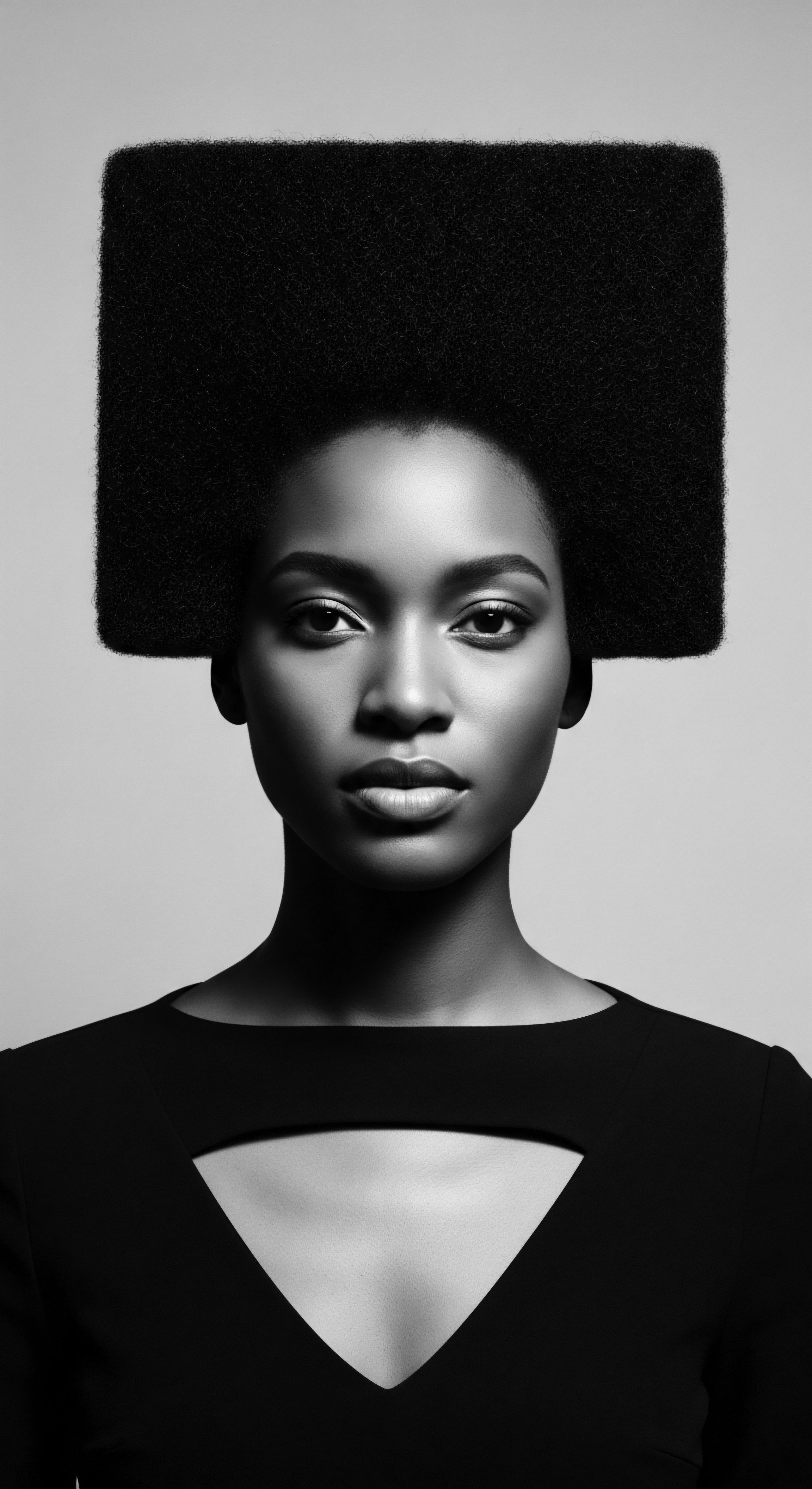
Roots
There exists a certain resonance, a whisper carried through generations, when one considers the strands that crown our heads. For those of us whose lineage traces through the vast, complex histories of textured hair, the story is never merely one of biology. It is, instead, an intimate chronicle, etched into the very helix of our being, shaping the silent narratives we carry about ourselves. This shaping power of hair heritage, particularly within Black and mixed-race communities, extends far beyond superficial appearance; it delves into the core of self-perception, grounding identity in a profound ancestral memory.

What Deep Strata Inform Self-Perception?
To truly grasp how hair heritage molds one’s current self-perception, we must first look to the deep strata, the foundational understanding of textured hair itself. This understanding reaches back to elemental biology, yet finds its truest meaning when placed against the backdrop of ancient practices and collective wisdom. Every curl, every coil, every wave holds within its microscopic structure a testament to resilience and adaptation, echoing the journey of those who bore it.
Hair, especially for communities with rich cultural histories tied to it, is seldom perceived as a mere physiological outgrowth. It is, rather, a living archive, a continuous link to ancestral practices and traditional ways of knowing.
Consider the very anatomy of textured hair. Unlike its straight counterparts, the follicle of coiled hair is often elliptical, dictating the hair shaft’s spiral path as it emerges. This unique geometry accounts for the characteristic curl pattern, but it also influences how moisture travels along the strand and how oil from the scalp distributes itself. From an ancestral perspective, this inherent dryness and tendency for breakage were not seen as flaws, but rather as characteristics that necessitated specific, attentive care.
Ancient Egyptian reliefs depict individuals with intricately braided and styled hair, pointing to a long-held reverence for hair as a marker of social status, spirituality, and tribal identity (Byrd & Tharps, 2014). This historical context immediately elevates hair beyond simple biology, positioning it as a significant element of communal and individual selfhood.
The earliest systems for understanding hair weren’t scientific classifications as we know them today, but rather intuitive, practice-based distinctions rooted in observation and communal experience. Our forebears recognized the variations in curl, density, and texture, devising specific methods of care and adornment tailored to these differences. These were not arbitrary choices.
They were acts of profound connection to their hair’s nature, demonstrating a deep, inherited knowledge of its needs. The way hair was cared for, styled, and even spoken about within these communities became a foundational aspect of how individuals perceived their own bodies and their place within the collective.
Hair heritage is a living archive, its patterns and care rituals a continuous link to ancestral wisdom, deeply shaping how one views self.

Ancestral Wisdom and Modern Insights
The lexicon used to describe textured hair today, while seemingly modern with numerical and alphabetical classifications, still carries subtle echoes of these older, intuitive understandings. Before scientific models, people identified hair by how it felt, how it responded to moisture, and how it could be styled. These descriptors often tied into broader cultural narratives about beauty and strength. The language itself becomes a mirror, reflecting generations of interaction with hair, acknowledging its diversity, and framing its characteristics within a context of dignity and beauty.
For centuries, the cyclical nature of hair growth was understood not through microscopic analysis, but through lived experience and seasonal observations. Certain times of year, certain life stages, were associated with different hair behaviors. This observational wisdom informed practices like protective styling, which historically served not only aesthetic purposes but also pragmatic ones, safeguarding the hair from environmental rigors.
The decision to braid, twist, or wrap hair often carried communal significance, signifying rites of passage, marital status, or even spiritual devotion. These practices, passed down through generations, instilled a collective perception of hair as a cherished, almost sacred, part of the body, worthy of dedicated attention and respect.
| Aspect of Hair Follicle Shape |
| Ancestral Perspective (Heritage-Informed) Understood through observed curl patterns; dictates styling and care needs. |
| Contemporary Scientific Perspective Identified as typically elliptical, leading to hair shaft's helical growth. |
| Aspect of Hair Moisture Retention |
| Ancestral Perspective (Heritage-Informed) Recognized as a challenge, leading to oiling and protective styling traditions. |
| Contemporary Scientific Perspective Explained by cuticle layer lifting and increased surface area, causing faster water loss. |
| Aspect of Hair Hair Strength |
| Ancestral Perspective (Heritage-Informed) Linked to overall health, nutrition, and specific plant-based fortifiers. |
| Contemporary Scientific Perspective Measured by tensile strength, influenced by disulfide bonds and protein structure. |
| Aspect of Hair Classification |
| Ancestral Perspective (Heritage-Informed) Based on visual appearance, feel, and styling response; often tied to tribal or regional identity. |
| Contemporary Scientific Perspective Numerical/alphabetical systems (e.g. 3A-4C) based on curl diameter and pattern. |
| Aspect of Hair The journey from intuitive ancestral knowing to precise scientific understanding enriches our appreciation for textured hair's deep heritage. |
Therefore, how does hair heritage shape current self-perception? It lays down the very blueprint. It dictates not only what we see in the mirror, but also the stories we tell ourselves about what that hair represents.
It is a narrative of survival, of beauty, of cultural affirmation that began long before any modern product hit the shelves. This profound connection means that for many, particularly in the Black diaspora, hair is not just hair; it is a visible lineage, a symbol of perseverance, and a constant, tactile reminder of where one comes from.

Ritual
From the foundational truths of hair’s nature, we move into the vibrant realm of its daily engagement. The art and science of textured hair styling, particularly when viewed through the unique lens of heritage, are not simply acts of beautification. They are, at their heart, deeply ingrained rituals, performances of care and self-expression that carry the echoes of ancestral hands and communal bonds. These practices, evolving yet retaining core elements across generations, significantly inform how hair heritage shapes current self-perception.
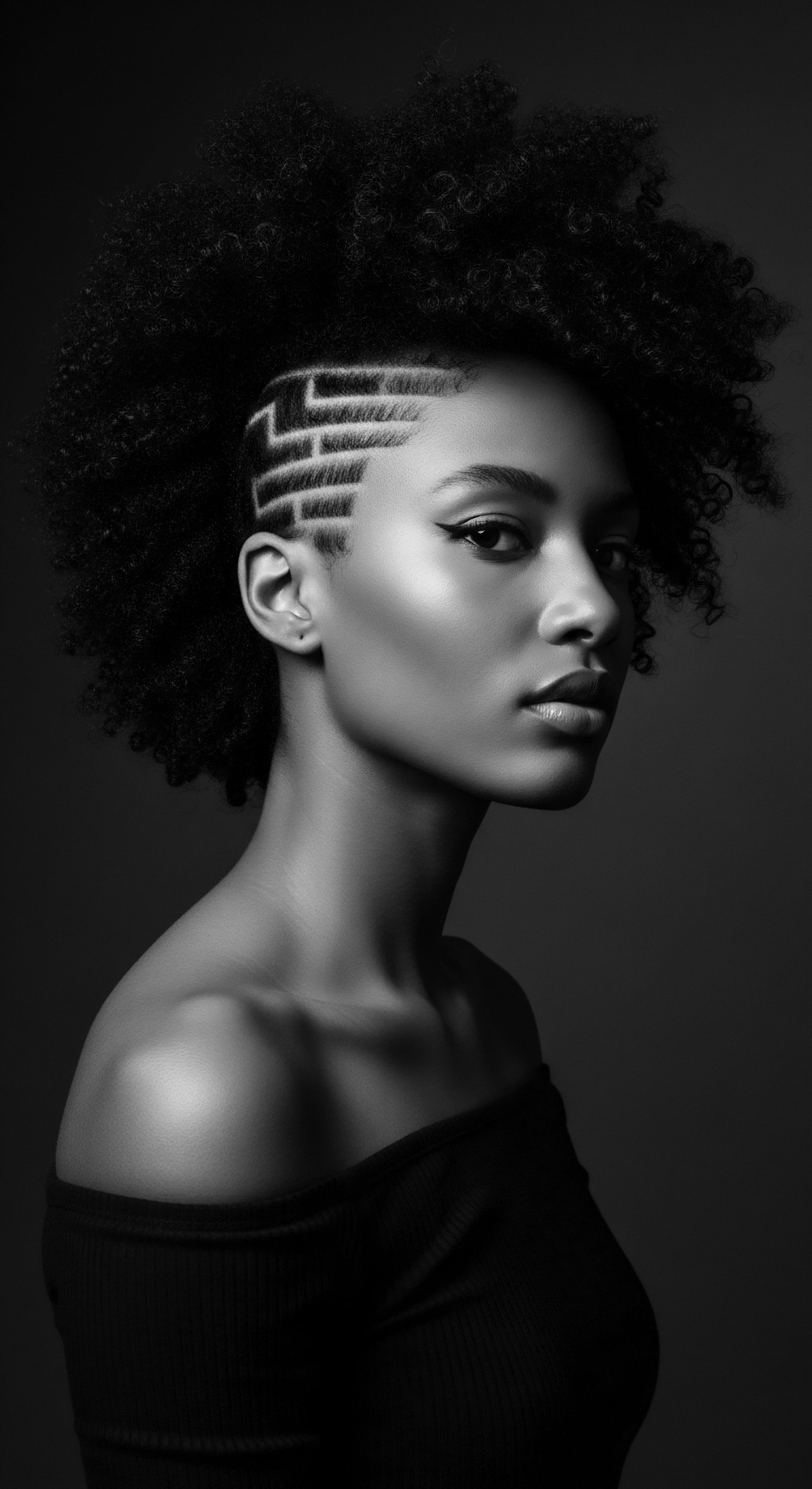
How Do Ancient Styling Ways Mirror Modern Self-Expression?
The legacy of protective styling, for instance, offers a compelling illustration. From the elaborate cornrows found on ancient African sculptures to the intricate braided styles of contemporary times, these techniques have always served a dual purpose ❉ safeguarding the hair from environmental stressors and expressing identity. Historically, braids and twists were intricate codes, communicating social status, marital availability, age, and even religious beliefs within a community (Gordon, 2017). The act of braiding was often communal, a shared experience that bonded individuals, especially women.
Hands working together, stories exchanged, wisdom imparted – these were the unseen threads that truly bound the style. For individuals today, engaging in these same styling traditions can be a powerful affirmation of cultural connection. The feeling of coils being carefully manipulated, the rhythm of the partings, the satisfying weight of a finished style, all evoke a profound sense of continuity, linking the present self to a timeless ancestral practice.
Consider the seemingly simple act of natural styling. Defining curls or coils often involves techniques that, while perhaps rebranded, share deep roots with historical methods. Techniques like “shingling” or finger-coiling mimic the meticulous, individual strand manipulation that would have been used with plant-based emollients centuries ago. The pursuit of definition, the desire for hair to express its inherent texture, is a subtle rebellion against historical pressures to conform to Eurocentric beauty standards.
By celebrating the hair’s natural inclination, one directly honors the genetic heritage passed down, making a visible statement about acceptance and pride in one’s unique biological and cultural legacy. This personal choice, replicated by many, transforms into a collective act of affirming hair heritage, which in turn reinforces a positive self-perception.
Styling textured hair transcends mere aesthetics, acting as a living ritual that binds present self-expression to ancestral traditions.

Tools and Transformations Reflecting Heritage
The tools employed in textured hair care also tell a story of evolving heritage. Before the advent of plastic combs and heat appliances, natural materials ruled. Bone combs, wooden picks, and intricately carved implements were not only functional but often imbued with symbolic meaning. These tools were extensions of the hands, designed to navigate the unique characteristics of coiled hair gently.
Today, while materials have changed, the fundamental designs of wide-tooth combs or specialized picks often mirror these older forms, acknowledging the specific needs of textured strands. The very act of selecting and using these tools can be a quiet nod to the ingenuity of those who came before, fostering a sense of connection to a lineage of hair care wisdom.
The prominence of wigs and hair extensions, often viewed as modern beauty enhancements, also possesses a deep historical and cultural lineage within Black communities. From ancient Egypt, where wigs served as protection from the sun, symbols of status, and part of elaborate ceremonial dress, to their widespread use in various African cultures for spiritual and social purposes, these adornments have always been more than simple accessories (Byrd & Tharps, 2014). They represented transformation, protection, and often, a powerful form of artistic expression.
The ability to dramatically alter one’s appearance through these means, whether for personal expression, professional contexts, or stylistic versatility, allows individuals to navigate different facets of their self-perception, sometimes aligning with traditional practices of temporary hair transformation, sometimes adapting them for contemporary needs. This adaptability, too, is a form of inherited resilience, a historical capacity to adapt and innovate.
- Braids ❉ Ancient African protective styles, historically denoting social status, marital status, and tribal affiliation.
- Twists ❉ Traditional method of clumping hair strands, providing definition and minimizing tangles, often using natural oils.
- Wigs ❉ Used by ancient Egyptians and various African cultures for status, protection, and ceremonial dress.
- Combs ❉ Originally crafted from wood, bone, or horn, designed for detangling and styling dense, coiled hair.
The advent of heat styling and thermal reconditioning presents a more complex dialogue with heritage. While modern methods offer versatility, the historical context of hair straightening, often born from pressures to conform, can influence self-perception. Yet, even within these practices, there are shifts. A conscious choice to use heat sparingly, with an emphasis on hair health, or as a temporary stylistic exploration, speaks to a newfound agency rooted in a deeper understanding of one’s hair.
This agency allows individuals to engage with different aesthetic expressions without abandoning the fundamental appreciation for their hair’s natural texture, thereby integrating modernity with respect for their heritage. The modern toolkit, from steam treatments to silk presses, becomes a testament to how far the understanding of textured hair has come, enabling choices that were once fraught with conflict to become empowering acts of personal style, all while retaining a subconscious link to the historical journey of Black hair.

Relay
From the foundational biology and the artistry of styling, our exploration moves into the ongoing stewardship of textured hair – the daily and nightly practices that sustain its vibrancy. This “Regimen of Radiance,” rooted deeply in ancestral wisdom and constantly refined by contemporary understanding, profoundly shapes how hair heritage influences current self-perception. It is within these consistent acts of care that the historical narratives of resilience and self-worth become embodied, transforming abstract heritage into tangible, lived experience.
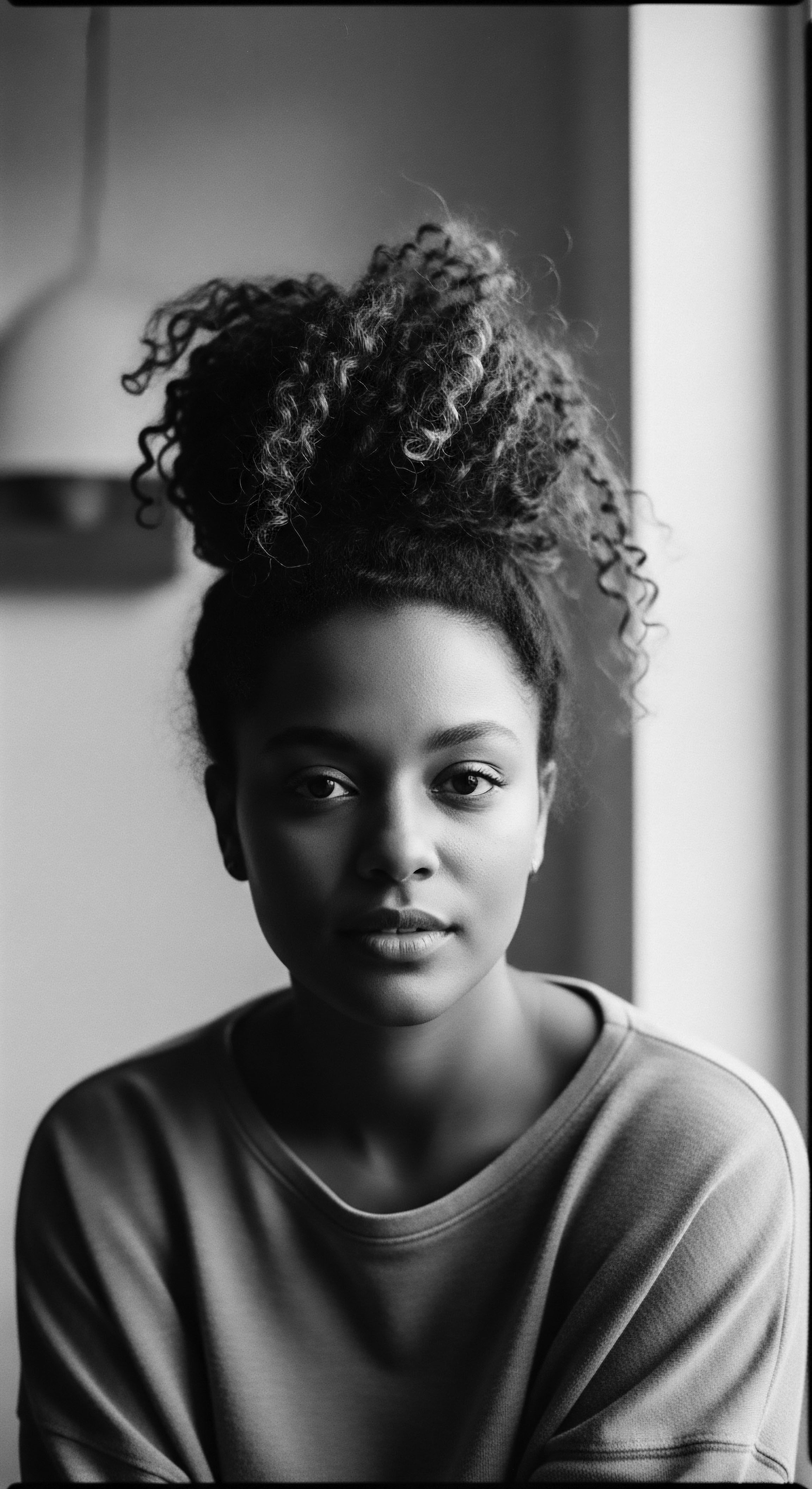
What Ancestral Wisdom Guides Daily Hair Care?
Building a personalized textured hair regimen, at its core, echoes the intuitive, holistic approaches of our ancestors. Before mass-produced products, care was derived from the earth itself – plant oils, butters, herbal infusions, and natural cleansers. These ingredients were chosen not merely for their chemical properties, but for their perceived energetic qualities, their availability within the immediate environment, and the wisdom passed down through oral traditions. For instance, the use of shea butter (Butyrospermum parkii), prevalent across West Africa for centuries, was not just about moisturizing hair; it was a communal practice, often involving women gathering to process the nuts, sharing knowledge, and reinforcing social bonds (Hall et al.
2011). Today, selecting natural ingredients like coconut oil or aloe vera, whether consciously or subconsciously, connects one to this lineage of resourcefulness and respect for nature’s bounty. This deliberate choice to nourish hair with substances often found in traditional practices strengthens a self-perception rooted in natural health and ancestral connection.
The nighttime sanctuary, specifically the wisdom surrounding essential sleep protection, offers a particularly poignant example of how heritage informs self-perception. The bonnet, the scarf, the satin pillowcase – these are not merely modern conveniences. They are direct descendants of ancient practices aimed at preserving intricate styles, retaining moisture, and protecting the hair during rest. Historically, head coverings held profound cultural and practical significance across many African societies, shielding hair from dust, sun, and tangles, while also often signifying status or spirituality.
The act of wrapping hair before sleep is a ritual of preservation, a gentle acknowledgment of the hair’s vulnerability and value. For many, this nightly ritual is a quiet, intimate moment of self-care, a tangible connection to the foresight and care exhibited by generations past. The self-perception fostered here is one of valuing one’s unique hair, understanding its needs, and honoring the traditions that ensure its longevity. It is a quiet, continuous act of self-love, deeply intertwined with the ancestral legacy of hair preservation.
Daily hair care, from selecting ingredients to nightly protection, translates abstract heritage into tangible, self-affirming acts of personal stewardship.

Can Ancient Remedies Aid Modern Hair Challenges?
The textured hair problem-solving compendium, though seemingly contemporary, often finds its most effective solutions by looking backward. Issues like dryness, breakage, or scalp irritation were not unknown to our ancestors. Their remedies, often derived from observing the natural world, involved properties that modern science now validates. Take, for example, the use of clay masks for cleansing and detoxifying the scalp.
While now a popular spa treatment, certain clays were historically used across African cultures for purifying the body and hair, often mixed with water or herbal infusions. The ability to draw on these time-tested solutions, sometimes blending them with modern scientific understanding, empowers individuals to take agency over their hair health. This blend of ancient wisdom and contemporary knowledge reinforces a self-perception of being both informed by a rich past and capable of navigating present challenges with resilience.
- Shea Butter ❉ A centuries-old West African staple, used for deep moisturization, scalp health, and hair protection.
- Aloe Vera ❉ Valued for its soothing, hydrating, and healing properties, traditionally applied to the scalp and hair strands.
- Baobab Oil ❉ Extracted from the “tree of life,” known for its nourishing fatty acids and ability to soften and strengthen hair.
- Chebe Powder ❉ A traditional Chadian hair treatment, used by women to strengthen hair, reduce breakage, and promote length retention.
Holistic influences on hair health, drawing from ancestral wellness philosophies, further deepen this connection. Many traditional cultures viewed the body as an interconnected system, where physical health, mental well-being, and even spiritual harmony all contributed to the vibrancy of one’s hair. Diet, stress levels, and emotional states were implicitly understood to impact hair growth and appearance. Practices like communal grooming, shared meals, and storytelling, while seemingly unrelated to hair care products, fostered environments of reduced stress and increased connection, which in turn contributed to overall health, including hair vitality.
This integrated perspective, often absent in purely product-driven modern approaches, reminds individuals that hair health is a reflection of overall wellness. Embracing this holistic view, a direct inheritance from ancestral practices, shapes a self-perception where inner balance and external radiance are intrinsically linked, reinforcing the idea that beauty flows from a deep, internal well-being rooted in a complete, healthy self, connected to its heritage.
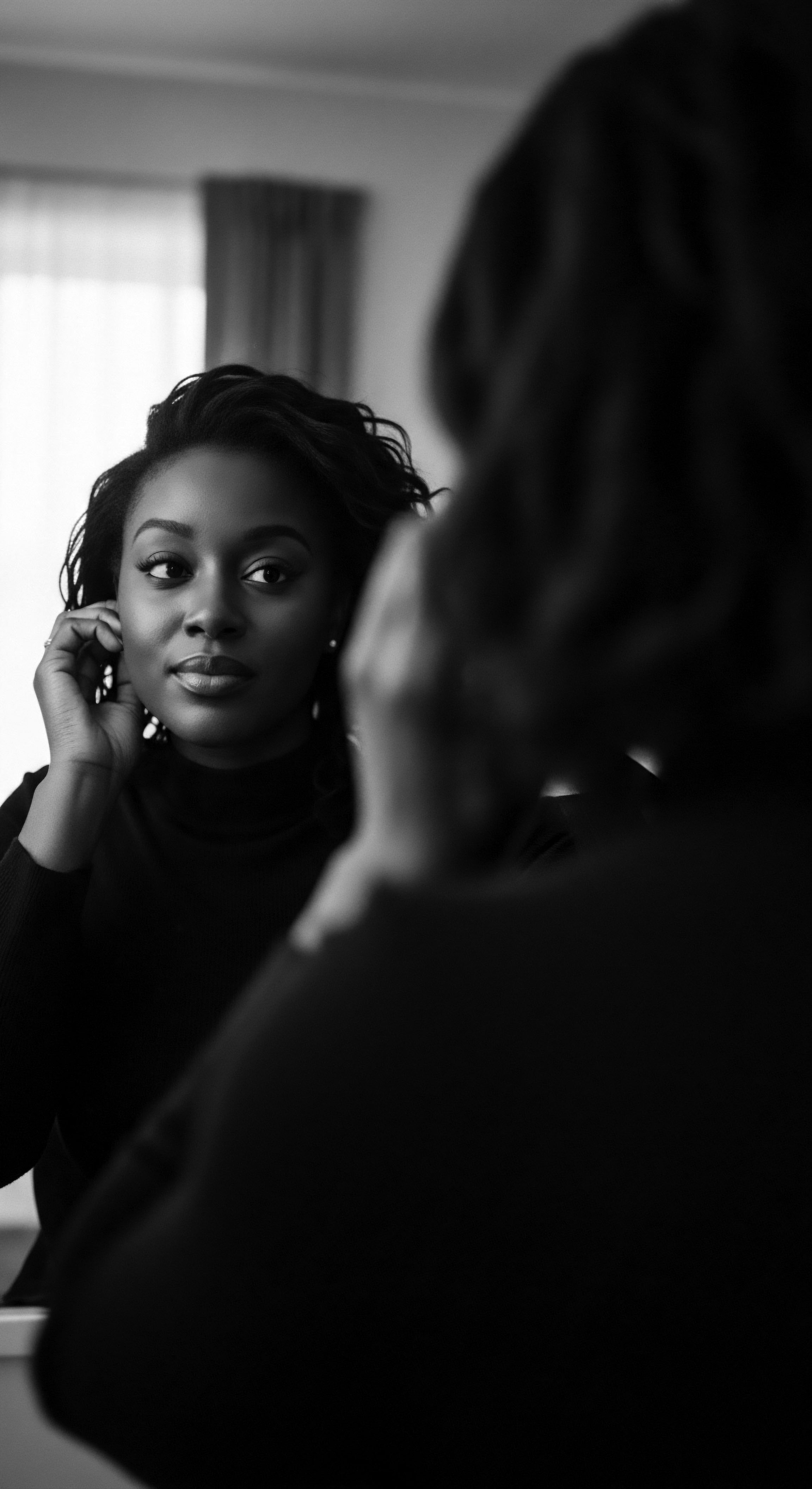
Reflection
The journey through textured hair heritage, from the fundamental biology of a single strand to the daily acts of nurture and care, reveals a profound truth ❉ our hair is a living testament to who we are, where we come from, and the resilient spirit that propels us forward. It is a continuous conversation between past and present, a tangible link to the ancestral wisdom that informs our self-perception. Each coil, each twist, each unique texture holds not only genetic information but also the cumulative stories of survival, artistry, and self-affirmation from generations past.
Our textured hair is a living testament, a continuous conversation between past and present, deeply informing self-perception.
The understanding of how hair heritage shapes current self-perception is not a static concept. It is dynamic, ever-unfolding, much like the helical structure of the hair itself. As individuals within Black and mixed-race communities reclaim and celebrate their natural textures, they are not simply adopting a trend; they are engaging in an act of powerful remembrance and re-definition.
They are honoring the ingenuity of those who sustained hair health with limited resources, the courage of those who defied oppressive beauty standards, and the enduring beauty that thrives within diversity. This ongoing process of discovery and affirmation transforms the individual’s self-perception, grounding it in a rich, undeniable legacy of strength and authenticity.
This enduring connection ensures that the care of textured hair is more than a routine; it is a ritual of legacy. It is a conscious choice to honor the wisdom inherited, to adapt it to contemporary life, and to carry it forward, ensuring that the ‘Soul of a Strand’ remains a vibrant, living archive for future generations. In every hair flip, every carefully styled braid, every nourished coil, there lies a story of heritage, a declaration of self, and an invitation to deeper self-knowing.
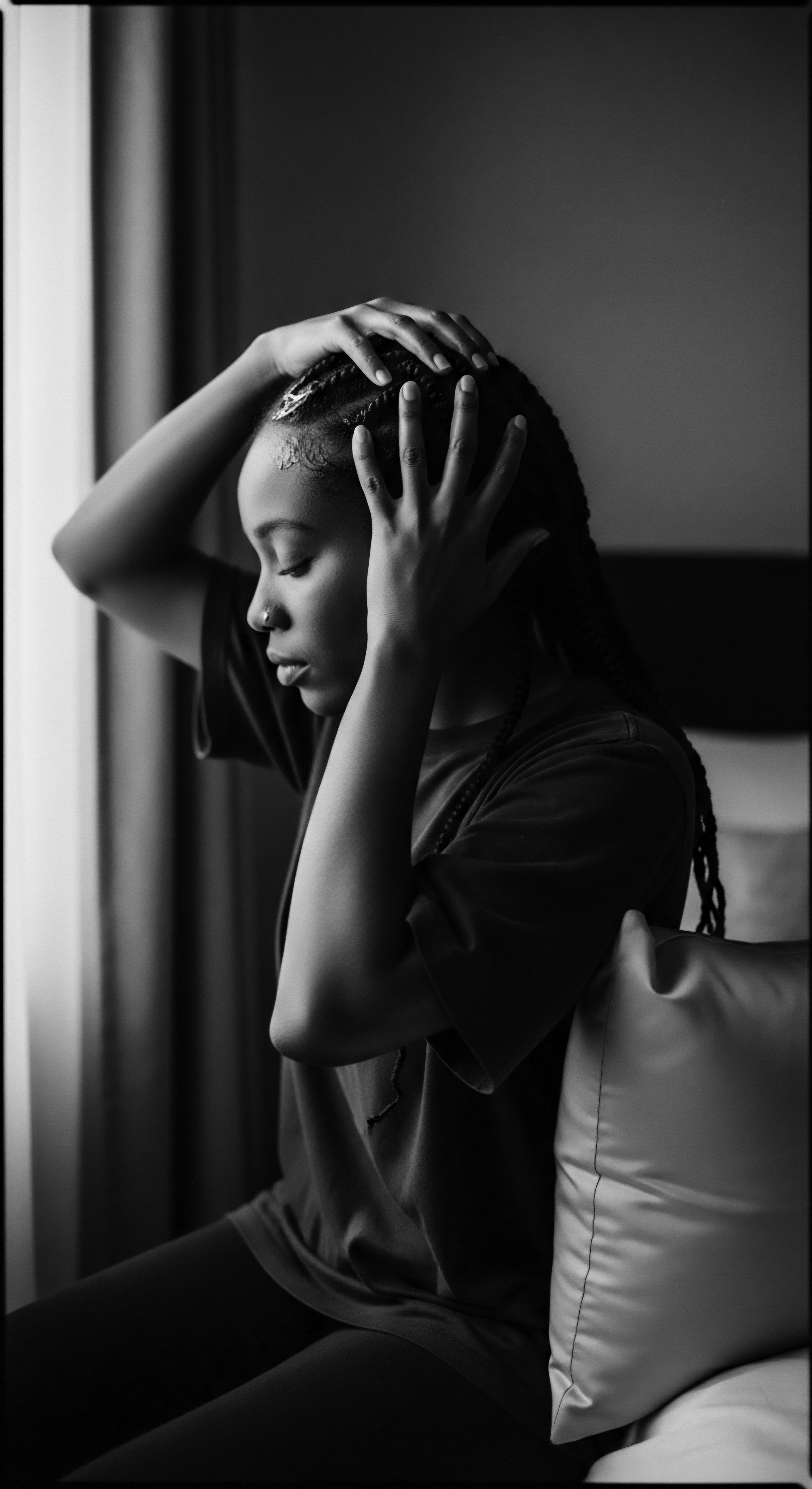
References
- Byrd, A. D. & Tharps, L. D. (2014). Hair Story ❉ Untangling the Roots of Black Hair in America. St. Martin’s Griffin.
- Gordon, T. (2017). Hair in African Art and Culture. The Museum for African Art.
- Hall, J. B. Johnson, J. F. & Newton, C. M. (2011). The Ecology of Shea Butter Tree (Vitellaria paradoxa) in Sudan and Ethiopia. Journal of Tropical Ecology, 27(4), 381-389.
